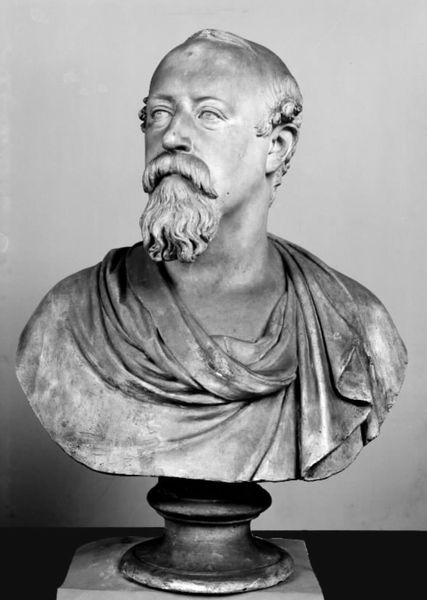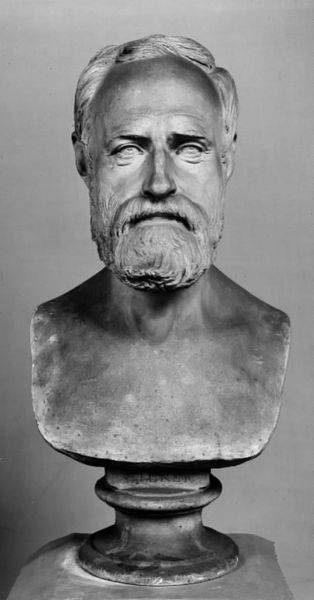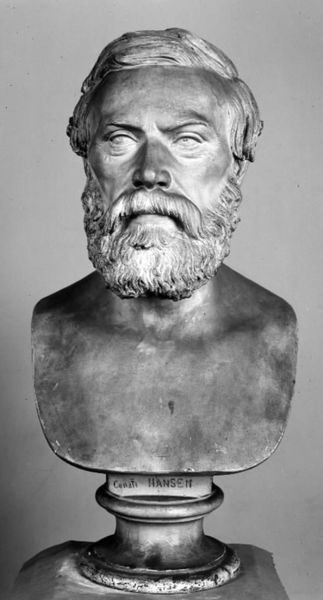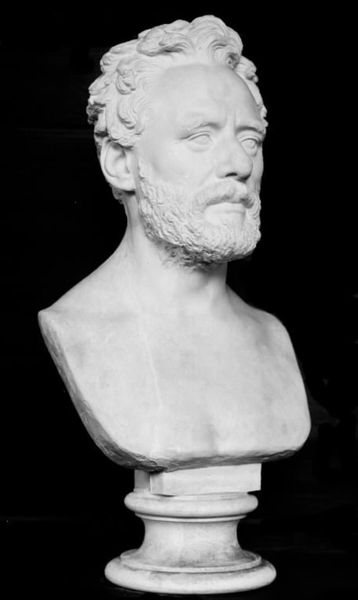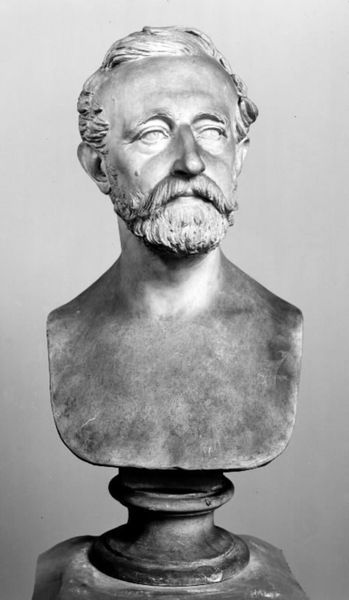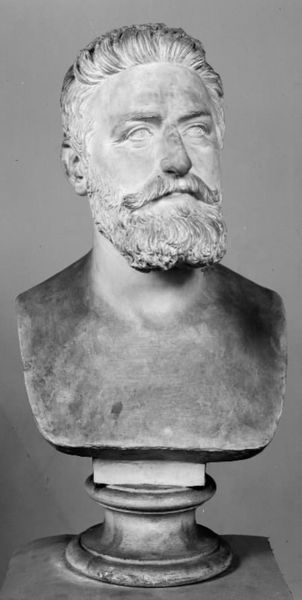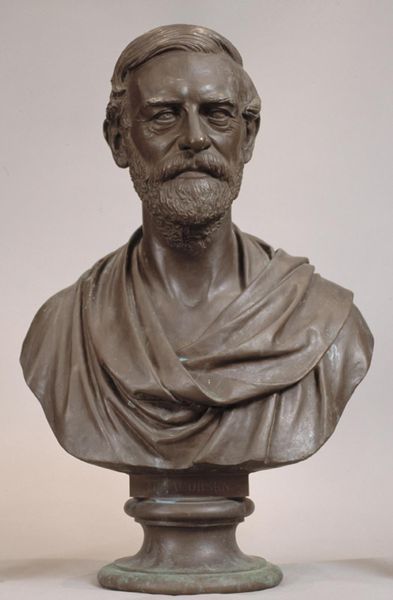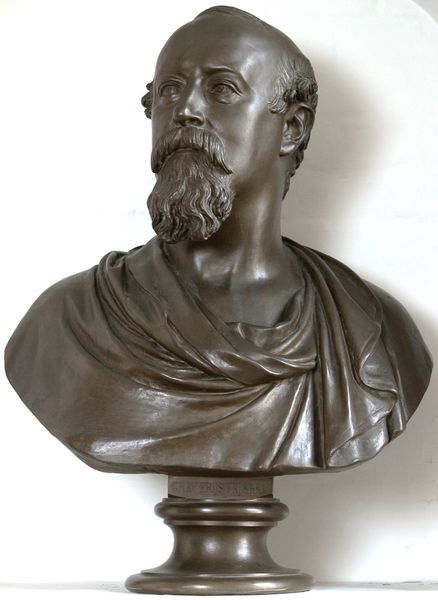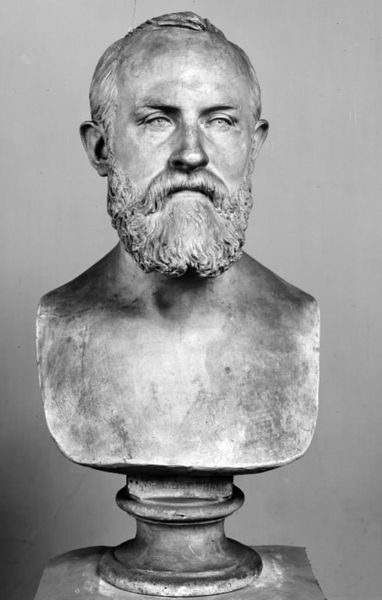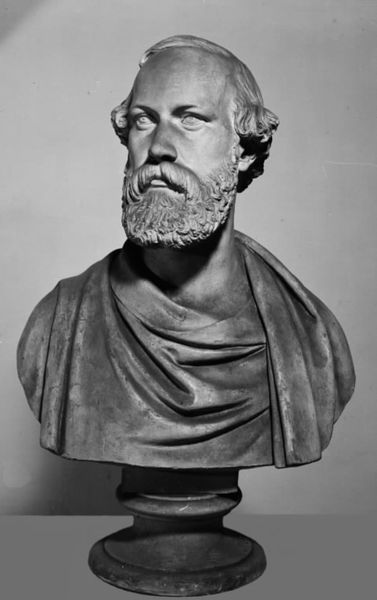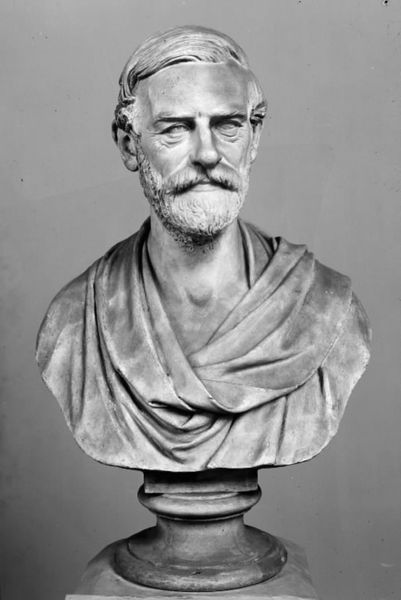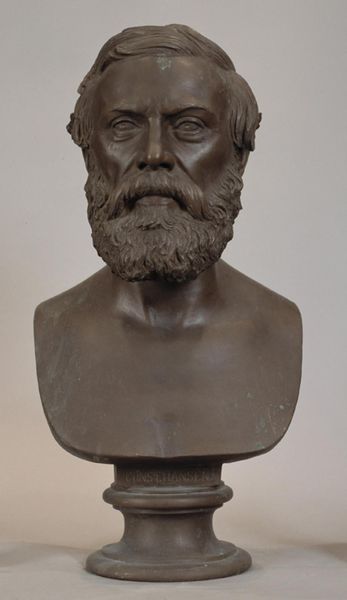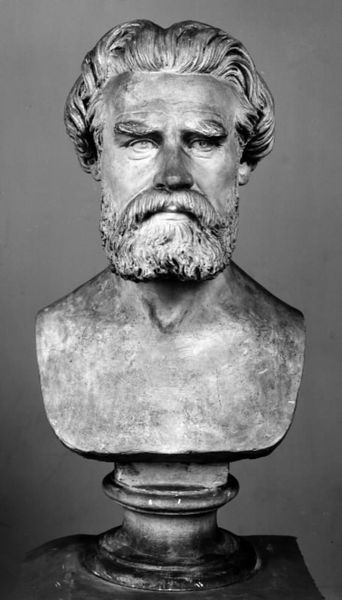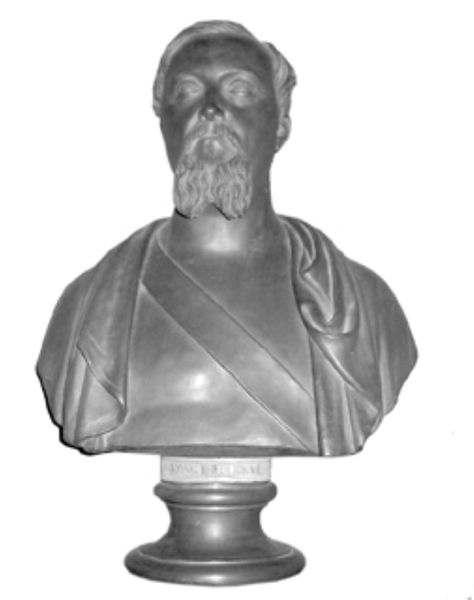
sculpture, marble
#
portrait
#
neoclacissism
#
portrait
#
classical-realism
#
sculpture
#
marble
#
realism
#
statue
Dimensions: 72.3 cm (height) (Netto)
Curator: Looking at this, I'm immediately struck by a sense of sternness, of contained power. It’s a bust, sculpted in marble, of Frederik VII, King of Denmark. Editor: Right, Bissen created this around 1851. I am intrigued by the choice of marble here. A classical material to represent a monarch navigating a period of increasing democratization. This wasn't some accident. How interesting to think about the work of extraction here...the quarry, the sculptors, and all the transportation needed to bring the material to the location. Curator: Well, yes, exactly! Marble inherently brings a certain weight of tradition. Think about the history embedded in that choice: ancient Rome, Renaissance sculpture, assertions of power... But it's not just the material, it's Bissen's technique. Look at how he renders the beard, almost cloud-like, juxtaposed with the sharp angles of the drapery. It creates a dialogue between the real and the ideal. Editor: Mmm, for me, there's also something almost haunting in the eyes, though. That piercing gaze meets you. But the reality is marble is also a relatively soft material. I find it kind of subversive to think that the great Kings will turn to dust in due time. He looks the part, of course, every inch a king. This sculpture presents, really, labor power rendered into an object meant for the contemplation and consumption of wealthy patrons, even today as a historical artwork. Curator: That reading makes sense, that tension. You mentioned labor—I keep thinking of Bissen in his studio, wrestling with this material, translating flesh and bone into stone, while, outside, Denmark was in the throes of massive social and political changes. Was he deliberately highlighting the contrast between the enduring quality of marble and the turbulent nature of the era? I bet. Editor: It makes me wonder who else handled this object after Bissen. Whose hands helped polish it? Transport it? Place it? Curator: Good questions...and what does it mean that we are even handling it now, virtually, discussing these elements today, a new kind of production and accessibility. I see your point, that consideration shifts my understanding...it gives us all food for thought about the work’s layered histories, its ongoing social life, and our role as viewers in shaping those meanings.
Comments
No comments
Be the first to comment and join the conversation on the ultimate creative platform.
